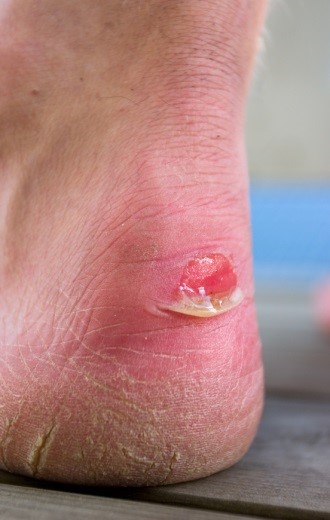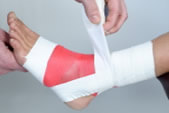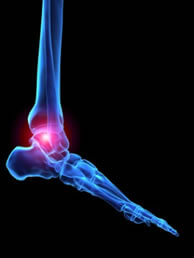Super User
Exercising for Diabetics
 Exercise is crucial when it comes to dealing with diabetes. Extra precautions need to be taken for people with diabetes compared to those without it. A doctor must always be consulted if a person with diabetes wants to change his exercise routine. For diabetics the best time to exercise is one to three hours after eating, when blood sugar levels are at their highest point. It is important for diabetics to test their blood sugar levels before exercising. Having a small snack can raise low blood sugar levels and prevent hypoglycemia. Diabetics should also wear medical alert bracelets while they exercise and carry glucose tablets in case of emergency.
Exercise is crucial when it comes to dealing with diabetes. Extra precautions need to be taken for people with diabetes compared to those without it. A doctor must always be consulted if a person with diabetes wants to change his exercise routine. For diabetics the best time to exercise is one to three hours after eating, when blood sugar levels are at their highest point. It is important for diabetics to test their blood sugar levels before exercising. Having a small snack can raise low blood sugar levels and prevent hypoglycemia. Diabetics should also wear medical alert bracelets while they exercise and carry glucose tablets in case of emergency.
Diabetic foot care is important in preventing foot ailments such as ulcers. If you are suffering from diabetes or have any other concerns about your feet contact Dr. Mark Quist from Carolina Foot & Ankle Specialists. Dr. Quist will assist you with all of your podiatric concerns.
Diabetic Foot Care
Diabetes affects millions of people every year. Diabetes can damage blood vessels in many parts of the body, including the feet. Because of this, taking care of your feet is essential if you have diabetes, and having a podiatrist help monitor your foot health is highly recommended.
The Importance of Caring for Your Feet
- Routinely inspect your feet for bruises or sores.
- Wear socks that fit your feet comfortably.
- Wear comfortable shoes that provide adequate support.
Patients with diabetes should have their doctor monitor their blood levels because blood sugar levels play such a huge role in diabetic care. Monitoring these levels on a regular basis is highly advised.
It is always best to inform your healthcare professional of any concerns you may have regarding your feet, especially for diabetic patients. Early treatment and routine foot examinations are keys to maintaining proper health, especially because severe complications can arise if proper treatment is not applied.
If you have any questions please feel free to contact one of our offices from Huntersville, Mooresville and Mountain Island, NC.We offer the newest diagnostic and treatment technologies for all your foot and ankle needs.
Blisters Develop after Repeated Friction
 Both blisters and calluses develop in response to repeated friction on the skin, however, blisters can be described as a fluid-filled bubble. As the outermost layer of skin, or the epidermis, is damaged, fluid helps to protect the bottom layers of skin from further infection. Blisters can also be caused by burns or sunburns as well as frostbite and can take up to a week to heal. Avoid popping the blister unless it has not healed on its own.
Both blisters and calluses develop in response to repeated friction on the skin, however, blisters can be described as a fluid-filled bubble. As the outermost layer of skin, or the epidermis, is damaged, fluid helps to protect the bottom layers of skin from further infection. Blisters can also be caused by burns or sunburns as well as frostbite and can take up to a week to heal. Avoid popping the blister unless it has not healed on its own.
Blisters are prone to making everyday activities extremely uncomfortable. If your feet are hurting, consult with Dr. Mark Quist from Carolina Foot & Ankle Specialists. Dr. Quistwill assist you with all of your podiatric concerns.
Foot Blisters
Foot blisters develop as a result of constantly wearing tight or ill-fitting footwear. This happens due to the constant rubbing from the shoe, which can often lead to pain.
What are Foot Blisters?
A foot blister is a small fluid-filled pocket that forms on the upper-most layer of the skin. Blisters are filled with clear fluid and can lead to blood drainage or pus if the area becomes infected.
How do Blisters Form?
Blisters on the feet are often the result of constant friction of skin and material, usually by shoe rubbing. Walking in sandals, boots, or shoes that don’t fit properly for long periods of time can result in a blister. Having consistent foot moisture and humidity can easily lead to blister formation.
Prevention & Treatment
It is important to properly care for the affected area in order to prevent infection and ease the pain. Do not lance the blister and use a Band-Aid to provide pain relief. Also, be sure to keep your feet dry and wear proper fitting shoes. If you see blood or pus in a blister, seek assistance from a podiatrist.
If you have any questions please feel free to contact one of our offices from Huntersville, Mooresville and Mountain Island, NC. We offer the newest diagnostic and treatment technologies for all your foot and ankle needs.
Holger Badstuber Playing Again After Broken Ankle Injury in February
 Holger Badstuber, Bayern Munich defender, was spotted having resumed training three months after his broken ankle incident. Badstuber had fractured his ankle while training in February. Badstuber came back in early May to run laps around the training pitches, preparing to play again for Bayern’s starting XI. Badstuber had previously torn his anterior cruciate ligaments in 2012 and had to miss the rest of the 2012-2013 season in rehab.
Holger Badstuber, Bayern Munich defender, was spotted having resumed training three months after his broken ankle incident. Badstuber had fractured his ankle while training in February. Badstuber came back in early May to run laps around the training pitches, preparing to play again for Bayern’s starting XI. Badstuber had previously torn his anterior cruciate ligaments in 2012 and had to miss the rest of the 2012-2013 season in rehab.
Broken ankles need immediate treatment. If you are seeking treatment, contact Dr. Mark Quist from Carolina Foot & Ankle Specialists. Dr. Quistcan provide the care you need to keep you pain-free and on your feet.
Broken Ankles
A broken ankle is experienced when a person fractures their tibia or fibula in the lower leg and ankle area. Both of these bones are attached at the bottom of the leg and combine to form what we know to be our ankle.
When a physician is referring to a break of the ankle, he or she is usually referring to a break in the area where the tibia and fibula are joined to create our ankle joint. Ankles are more prone to fractures because the ankle is an area that suffers a lot of pressure and stress. There are some obvious signs when a person experiences a fractured ankle, and the following symptoms may be present.
Symptoms of a Fractured Ankle
- Excessive pain when the area is touched or when any pressure is placed on the ankle
- Swelling around the area
- Bruising of the area
- Area appears to be deformed
If you suspect an ankle fracture, it is recommended to seek treatment as soon as possible. The sooner you have your podiatrist diagnose the fracture, the quicker you’ll be on the way towards recovery.
If you have any questions please feel free to contact one of our offices from Huntersville, Mooresville and Mountain Island, NC. We offer the newest diagnostic and treatment technologies for all your foot and ankle needs.
All About Broken Ankles
Broken ankles are a serious injury that can lead to an inability to walk, function, and also cause a significant amount of pain. A broken ankle is a break in one of the three bones in your body that connect at the ankle joint, the tibia, the fibula, and the talus. The tibia and fibula are your two primary leg bones that connect at the knee, which sit directly upon the talus bone. This is protected by a fibrous membrane that allows for movement in our ankle joint. A broken ankle is usually caused by the foot rolling under or twisting too far, causing one of these three bones to snap.
A broken ankle is different from an ankle sprain, which occurs when the ligaments are ripped or torn but no bones have been broken. A sprain can still be very severe, causing bruising in the foot and an inability to hold your own weight, much like a broken ankle would. If you’re unable to stand, and suspect that you have a broken ankle, the first thing to do would be to get an immediate x-ray to determine the severity of the break.
A common cause of broken anklesis when the ankle is rolled over with enough pressure to break the bones. This usually happens during exercise, sports, or other physical activity. Another common cause is a fall or jump from a tall height.
One immediate treatment for pain reliefis elevating the feet above your head to reduce blood flow to the injured area. You can also apply ice packs to your ankles to help reduce swelling, redness, inflammation, and pain. After these initial steps, getting a cast and staying off your feet as much as possible will aid in the recovery of the broken ankle.The less movement and stress the ankle has to endure, the more complete it will heal.A doctor can determine if surgery is needed in order to heal correctly. In these cases, an operation may be the only option to ensure the ability to walk properly again, followed by physical therapy and rehabilitation.
It is highly important to determine if surgery is needed early on, because a broken ankle can become much more severe than you realize. If not professionally treated, the broken ankle will inhibit your walking, daily functioning, and produce a large amount of pain. Treating your broken ankle early on will help prevent further damage to it.
Osteoarthritis Affects 80% of North Americans by the Age of 65
 Osteoarthritis, a form of arthritis, occurs when the body’s immune system begins attacking healthy cartilage and tissue. “Eighty percent of North Americans have X-ray evidence of osteoarthritis by age 65, and sixty percent have significant pain.” As osteoarthritis is a progressive chronic disease, the cartilage of the joints wears down over time and there is no known cure. Symptoms of the disease include gradually increasing pain throughout the body, which are usually treated with NSAIDs, or non-steroidal pills.
Osteoarthritis, a form of arthritis, occurs when the body’s immune system begins attacking healthy cartilage and tissue. “Eighty percent of North Americans have X-ray evidence of osteoarthritis by age 65, and sixty percent have significant pain.” As osteoarthritis is a progressive chronic disease, the cartilage of the joints wears down over time and there is no known cure. Symptoms of the disease include gradually increasing pain throughout the body, which are usually treated with NSAIDs, or non-steroidal pills.
Arthritis can be a difficult condition to live with. If you are seeking treatment,contact Dr. Mark Quist from Carolina Foot & Ankle Specialists. Dr. Quist can provide the care you need to keep you pain-free and on your feet.
Arthritic Foot Care
Arthritis is a joint disorder that involves inflammation of different joints in your body, such as in your feet. Arthritis is often caused by a degenerative joint disease and causes mild to severe pain in all affected areas. On top of this, swelling and stiffness in the affected joints can also be a common symptom of arthritis.
In many cases, wearing ill-fitting shoes can worsen the effects and pain of arthritis. Wearing shoes that have a lower heel and extra room can help your feet feel more comfortable. In cases of rheumatoid arthritis, the arch in your foot may become problematic. Buying shoes with proper arch support that contour to your feet can help immensely.
Alleviating Arthritic Pain
- Exercises that stretch the foot can prevent further pain and injury and increase mobility
- Most of the pain can be alleviated with anti-inflammatory drugs, heat, and topical medications
- Massages can help to temporarily alleviate pain.
It is best to see your doctor for the treatment that is right for your needs and symptoms. Conditions vary, and a podiatrist can help you determine the right method of care for your feet.
If you have any questions please feel free to contact one of our offices located in Huntersville, Mooresville and Mountain Island, NC. We offer the newest diagnostic and treatment technologies for all your foot and ankle needs.
Arthritic Foot Care
During your lifetime, you will probably walk about 75,000 miles, which is quite a lot of stress to put on your feet. As you get older, the 26 bones and 30 joints in each of your feet will lose flexibility and elasticity.Your foot’s natural shock absorbers will wear down as well. Having arthritis added to this mix only makes matters worse. Your joints will become distorted and inflamed, which is why arthritic foot care needs to be something to think about every day.
When dealing with arthritis, having additional foot complications, such as bunions, hammertoes, or neuroma, can be a serious detriment. To avoid these, buy well-fitting shoes with a lower heel and good support. Arthritis causes you to lose your arch, so having shoes with good arch support is also highly recommended.
Aside from getting good arch support, the shoes need to fit comfortably and properly as well. A good place to start is by leaving a finger width between the back of the shoe and your foot to gauge proper size. It is also helpful to have a square or rounded toe box in the front to provide even more comfort. Another thing to look for is a rubber sole that can provide a cushion and absorb shock as you walk. This adds flexibility to the ball of your foot when you push off your heel to walk.
Exercise is another key aspect of arthritic foot care. Exercise not only strengthens and stretches your muscles and joints, but helps to prevent further injury and pain as well. Stretching the Achilles tendon, the tendon located in the back of your heel, will give you added mobility and reduce pain due to stress. Another thing you can do is massage your feet, kneading the ball of your foot as well as your toes from top to bottom.
Stretching the Achilles tendon is a simple exercise that you can do at home anytime. Lean against the wall with your palms flat against the surface while placing one foot forward, towards the wall, and one foot behind you. Bend your forward knee towards the wall while keeping your back knee locked straight, and make sure both your heels are completely touching the ground at all times. This will stretch your Achilles tendon and calf muscles as well. You will feel the stretch almost immediately. You can also stretch your toes in a couple ways. One involves taking a rubber band and wrapping it around both your big toes while your heels remain together. Then, pull them apart to stretch your big toe. You can also place a rubber band around all the toes of one of your feet. Then, try to separate each individual toe, stretching them all.
A final step you can take to help your arthritis is taking non-steroid, non-inflammatory drugs or topical medicines with capsaicin. Unfortunately, there is no complete way to remove all of your arthritic pain.However, following some of this advice can go a long way in staying as pain-free as possible.
Devin Robinson Needed Surgery for Broken Foot
 Devin Robinson, forward for the Florida Gators, had to have foot surgery and was sidelined for up to four months in late April. Robinson had surgery for a stress fracture in his left foot. He had originally entered the NBA draft on April 4, meaning he can return to the Gators for his junior season. There is hope that he will be ready to play for the start of the next season if he chooses to return.
Devin Robinson, forward for the Florida Gators, had to have foot surgery and was sidelined for up to four months in late April. Robinson had surgery for a stress fracture in his left foot. He had originally entered the NBA draft on April 4, meaning he can return to the Gators for his junior season. There is hope that he will be ready to play for the start of the next season if he chooses to return.
Foot surgery is sometimes necessary to fix a foot ailment. To learn more, contact Dr. Mark Quist from Carolina Foot & Ankle Specialists. Dr. Quist can provide the care you need to keep you pain-free and on your feet.
When Is Surgery Necessary?
Foot and ankle surgery is generally reserved for cases in which less invasive, conservative procedures have failed to help with the problem. Some of the cases in which surgery may be necessary are:
- Removing foot deformities like bone spurs and bunions
- Severe arthritis that has caused bone issues
- Cosmetic reconstruction
What Types of Surgery Are There?
The type of surgery you receive will depend on the nature of the problem you have. Some of the possible surgeries include:
- Bunionectomy for painful bunions
- Surgical fusion for realignment of bones
- Neuropathy decompression surgery to treat nerve damage
Benefits of Surgery
Although surgery is usually a last resort, it can provide more complete pain relief compared to non-surgical methods and may allow you to finally resume full activity.
Surgical techniques have also become increasingly sophisticated. Techniques like endoscopic surgery allow for smaller incisions and faster recovery times.
If you have any questions please feel free to contact one of our offices located in Huntersville, Mooresville and Mountain Island, NC. We offer the newest diagnostic and treatment technologies for all your foot and ankle needs.
Foot Surgery
In most cases, foot surgery is often chosen as the last-available option for conditions that have otherwise been unsuccessfully treated. Surgery may be necessary for several reasons, including the removal of foot deformities (e.g. bone spurs or bunions), arthritis problems, reconstruction due to injury, and congenital malformations (e.g. club foot or flat feet). Regardless of one’s age, foot surgery may be the only successful option for treatment for certain conditions.
The type of surgery one undergoes depends on the type of foot condition the patient has. For the removal of a growth, such as a bunion, a bunionectomy is necessary. If the bones in the feet need to be realigned or fused together, a surgical fusion of the foot is needed. For pain or nerve issues, a patient may require surgery in which the tissues surrounding the painful nerve are removed. Initially, less invasive treatments are generally attempted; surgery is often the last measure taken if other treatments are unsuccessful.
While in many cases surgery is often deemed as the final resort, choosing surgery comes with certain benefits. The associated pain experienced in relation to the particular condition is often relieved with surgery, allowing patients to resume daily activities. The greatest benefit, however, is that surgery generally eliminates the problem immediately.
Podiatry history has shown that foot treatments continue to evolve over time. In the field of foot surgery, endoscopic surgery is just one of the many advancements. As technology vastly improves, so will the various techniques in foot surgery, which already require smaller and smaller incisions with the use of better and more efficient tools. Thanks to such innovations, surgery is no longer as invasive as it was in the past, allowing for much faster and easier recoveries.
APMA Study Finds Americans Don’t Care About Their Feet
 The American Podiatric Medical Association recently published a study revealing that much of this nation’s foot pain goes untreated. In a survey of 1,000 people over the age of 18, 77% reported experiencing foot pain, but only a third of those claim they would see a podiatrist. Half of the participants with foot pain say that the pain has hindered walking, exercising, playing with grandchildren, and other daily activities.
The American Podiatric Medical Association recently published a study revealing that much of this nation’s foot pain goes untreated. In a survey of 1,000 people over the age of 18, 77% reported experiencing foot pain, but only a third of those claim they would see a podiatrist. Half of the participants with foot pain say that the pain has hindered walking, exercising, playing with grandchildren, and other daily activities.
Among the group who sought podiatric help, 88% reported a quick diagnosis and 76% received treatment that eliminated the problem. A third of the group said that their visits to the podiatrist exposed other health concerns, such as diabetes, circulatory issues, and nerve issues.
"It's not surprising to see how many people are affected by foot pain, when survey results show that we view our feet as the least important body part in terms of our overall health and wellbeing," said AMPA President Frank Spinosa. "Our feet are literally and figuratively the furthest things from our minds."
If you are experiencing pain in the feet or ankles, don’t join the stubborn majority refusing treatment. Feel free to contact Dr. Mark Quist from Carolina Foot & Ankle Specialists. Dr. Quistcan provide the care you need to keep you pain-free and on your feet.
What is a Podiatrist?
Someone would seek care of a podiatrist when they have suffered a foot injury or have common foot ailments such as: heal spurs, bunions, arch problems, deformities, ingrown toenails, corns, foot and ankle problems etc.
Podiatric Treatment
A podiatrist will treat the problematic areas of the feet, ankle or lower leg by prescribing the following:
- physical therapy
- drugs
- perform surgery on lower extremity fractures
- orthotic inserts or soles
A common podiatric procedure a podiatrist will use is a scanner or force plate which will allow the podiatrist to know the designs of orthotics. Patients are then told to follow a series of tasks to complete the treatment. The computer will scan the foot a see which areas show weight distribution and pressure points. The podiatrist will read the analysis and then determine which treatment plans are available.
If you have any questions please feel free to contact one of our offices located in Huntersville, Mooresville and Mountain Island, NC. We offer the newest diagnostic and treatment technologies for all your foot and ankle needs.
What is a Podiatrist
The branch of medicine that is focused on the treatment, diagnosis, and study of disorders of the lower leg, ankle and foot is referred to as podiatry. Because people often spend a great deal of their time on their feet, many problems in this area can occur. A person seeks help from the field of podiatry when they need treatment for heel spurs, bunions, arch problems, deformities, ingrown toenails, corns, foot and ankle problems, infections, and problems with the foot that are related to diabetes and additional diseases.
To treat problems of the foot, ankle or lower leg, a podiatrist may prescribe physical therapy, drugs, perform surgery, or set fractures. Individuals may also be recommended to wear corrective shoe inserts, custom-made shoes, plaster casts and strappings in order to correct deformities.
When trying to gather information on a patient problem, a scanner or force plate may be used in order to design orthotics. During this procedure, patients are told to walk across a plate that is connected to a computer; the computer then takes a scan of the foot and indicates weight distribution and pressure points. The computer readouts will give the podiatrist information to help them determine the correct treatment plans.
Diagnosis is also provided through laboratory tests and x-rays. Through the foot, the first signs of serious problems such as heart disease, diabetes and arthritis can show up. For example, individuals that have diabetes may frequently have problems such as infections and foot ulcers because they experience poor circulation in the foot area. A podiatrist can then have consultations with patients when symptoms arise. Referrals will then be made to specialists that handle the greater health problems.
Some podiatrists have their own independent, private practices or clinics where they have a small staff and administrative personnel. Many podiatrists work within group practices. They usually spend time performing surgery in ambulatory surgical centers or hospitals, or visit patients in nursing homes. Podiatrists typically spend between 30 to 60 hours of week working. Some podiatrists specialize in public health, orthopedics, surgery, or primary care. Other fields include specialties in geriatrics, dermatology, pediatrics, diabetic foot care and sports medicine.
Some podiatrist specialists complete extra training in the area of foot and ankle reconstruction that results from the effects of physical trauma or diabetes. There are also surgeons that perform surgery of a cosmetic nature to correct bunions and hammertoes.
